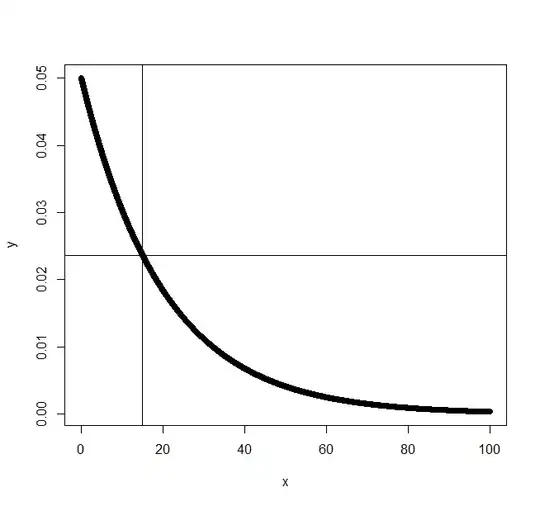Answer: A probability is an integral of a pmf/pdf. The dexp function does not yield said integral. Thus, the question is wrong at the outset, since the density is not supposed to be zero at a point in a cont. distribution. The probability — the integral — should, which it of course is. $$\int_{{\color{blue}x}}^{{\color{blue}x}} f(x) = 0$$
I am working through this video where the "author" states the probability of someone arriving in exactly 15 minutes when one person arrives on average every 20 minutes is 0.
That is, so he explains, because the exponential distribution is continuous. Thus, at any individual point the density is equal to zero.
However, when I enter dexp(15, 1/20) into R I get 0.02361833.
My question is now: Why is R producing this result instead of returning 0?
Or alternatively: Is it wrong that the probability of a single value of a exponential distribution, $P_{exp}(X = x)$, is zero?
